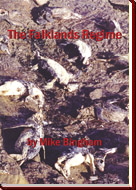 |
 |
|
|
|
|
|
|
|
|
|
|
 |
||||||||||||||||||||||||||||||
|
The Organization for the Conservation of Penguins, in partnership
with the Chilean, Argentine and British governments, has established a penguin monitoring programme in Chile and Argentina. The programme monitors the effects
of tourism, and compares penguin populations in Chile and Argentina, where commercial fishing is now banned, with those in the Falklands, where
commercial fishing close to penguin breeding sites still occurs. Comparison with data from the Falkland Islands,
highlights the problems faced when food resources are diminished
by commercial fishing boats, operating within 30km of Magellanic
penguin breeding sites.
HOW FALKLANDS PENGUINS COMPARE WITH ARGENTINA & CHILE (2009): Fishing within 30km of Penguins: Population: Breeding Success (chicks per pair): Foraging Duration (time required to catch food for chicks): Fledging Weights: Fledging Survival:
|
Our population studies of Magdalena Island (CHILE) record a penguin population of around 65,000 breeding pairs, an increase of around 6% over the last 8 years. Our studies of Cabo Virgenes (ARGENTINA) show a population of 120,000 breeding pairs, an increase of over 30% over the last 10 years. These are the colonies in Chile and Argentina closest to the Falklands, and their increases have taken place as Falklands penguin populations have declined by 90%. The reason is that Argentina and Chile protect penguins from commercial fishing, and the Falklands do not. Click on the links below for examples of survey maps and data in English and Spanish: PENGUINS , GULLS , BIRDS , HABITAT PINGUINOS, GAVIOTAS, AVES, VEGETACION Where commercial fishing is allowed within
the 30km foraging range of breeding penguins, the abundance of fish
and squid is obviously reduced. This means that adults seeking food
for chicks take much longer finding food (34 hours in the Falklands,
but only 18 hours in Argentina and Chile). Chicks therefore receive much less
food, so much fewer chicks survive (only 0.5 chicks per nest in
the Falklands, but 1.1 chicks per nest in Chile and 1.0 chicks per nest in Argentina). You can support our work to protect penguins by adopting a penguin. Visit our Adopt-a-Penguin page for further details. In addition to our research on Magdalena Island, we are also training Chilean government staff in seabird monitoring techniques, so that eventually the host country will be able to continue the seabird monitoring programme on a long-term basis. This work was funded by the British government, through the Darwin Initiative Programme.
|
|
||||||||||||||||||||||||||||



